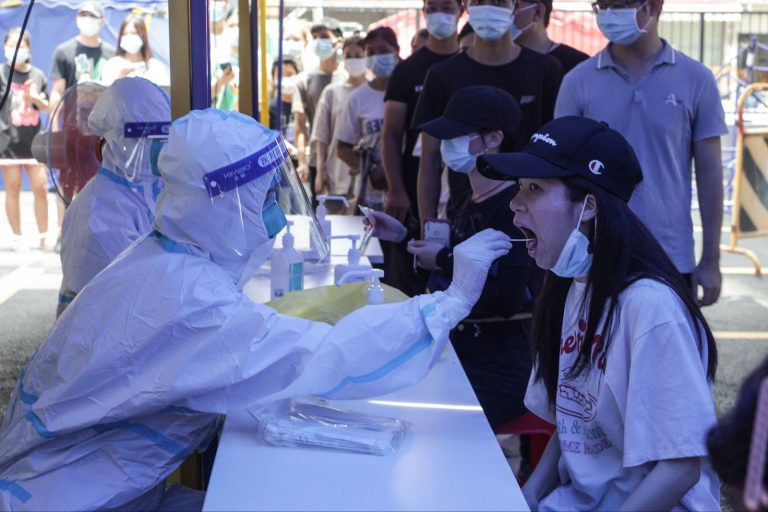The Chinese authorities on Sunday May 31 implemented mass nucleic acid testing and an array of travel and community restrictions following a surge of COVID-19 infections that have hit the southern city of Guangzhou, Guangdong Province, according to Reuters.
This most recent outbreak is suspected of beginning on May 21 when the surge in cases was first detected in Guangzhou.
Guangzhou, the capital of Guangdong Province and home to approximately 15 million people, ordered the mass testing and lockdowns after 27 new cases of COVID-19 were detected.
Testing is also underway in the nearby cities of Foshan and Shenzhen, which borders Hong Kong.
Authorities have claimed that seven of the cases were imported while the remaining 20 are suspected of originating within China. Nineteen asymptomatic cases were also detected; however, China does not count these infections as confirmed cases despite asymptomatic carriers still being able to spread the virus.
Success
You are now signed up for our newsletter
Success
Check your email to complete sign up
As of 10 p.m. on Monday, any travelers leaving Guangdong, whether by plane, train, bus or private vehicle must present the results of a nucleic acid test that was conducted within 72-hours of one’s travel date. Checkpoints have been established to test truck drivers, and other traffic, moving across the borders. However, some have reported being unable to leave or enter the area, reported the South China Morning Post.
Over 500 flights were cancelled at the Guangzhou Baiyun International Airport representing approximately a third of all flights in and out of the region on Monday. Guangzhou Baiyun International Airport has been the world’s busiest travel hub during the pandemic having served over 43 million travellers last year.
Most restrictions on domestic travel had been removed last March when the ruling Communist Party declared the virus under control. Travelers arriving from abroad were still required to be tested in an effort to limit the spread of the virus on the mainland.
One Guangzhou neighborhood was issued a stay-at-home order while authorities conducted door-to-door testing for the virus. In some cases outdoor markets, child care facilities, indoor dining and in-person grade school classes were suspended. All entertainment venues were closed.
The prefecture-level city of Liwan located within Guangzhou, with a population of approximately 540,000, was issued the stay-at-home order for five streets. Authorities have banned all non essential activities for the community. A fast-spreading coronavirus variant, which was first detected in India, is suspected of driving infections in the area. Residents of the area must rely on the government for deliveries of groceries and other essential items.
Official numbers questioned
The reported numbers out of the region have been low throughout the pandemic leading some to question the official reporting.
The batch of cases in Guangdong is the latest in a series of sporadic outbreaks reported throughout the country. However, on-the-ground witnesses speaking with overseas media often contradict the low numbers.
According to official tallies, as of May 30, a total of 91,099 cases of COVID-19 have been detected in China with a death toll of 4,636, a total that has remained unchanged for some time.
In an opinion piece published in the Globe and Mail, near the beginning of the pandemic, columnist Konrad Yakabuski asked the question, “the Chinese government’s first instinct has always been to hide the facts, especially if they reveal its own failures, so why would anyone believe the data coming out of China now on COVID-19?”
He continued, “there is little doubt that the lockdowns imposed in late January [2020] in Wuhan and Hubei province helped stem the spread of the coronavirus. But official data on the overall number of COVID-19 cases and deaths in China must be interpreted with a healthy dose of skepticism.”
Senator Marco Rubio (R-FL) tweeted at the time, “We have no idea how many cases China really has, but without any doubt, it’s significantly more than [what] they admit to.”, in defense of media reports that the U.S. had more coronavirus cases than China.
There are also reports of unconfirmed chronic patients with lingering mild to severe COVID-19 symptoms that authorities have omitted from official tallies. While testing negative for the virus numerous individuals are experiencing lingering symptoms consistent with COVID-19. This phenomenon has been reported widely across the globe.














